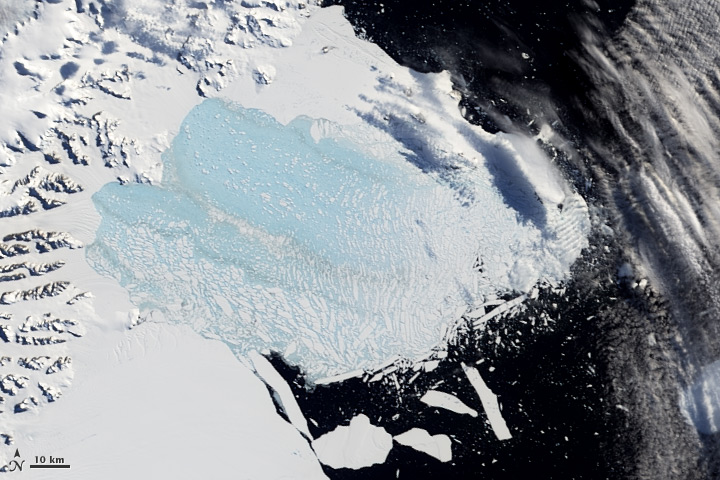
Enlarge / In 2002, the Larsen B ice shelf disintegrated in a matter of weeks. (credit: NASA EO)
In 2016, a study found that adding a couple new processes to a model of the Antarctic ice sheets made them much more vulnerable to melt, greatly increasing global sea level rise—both this century and in the centuries to come. It was an alarming result, to be sure, but also a bit conjectural. The researchers didn’t have a way to assess how realistically the new processes were modeled, so they viewed their paper as raising a question deserving attention, rather than providing an answer.
The new processes were the collapse of ice cliffs above a certain height (a theoretical constraint, but not something we’ve watched happen) and hydrofracturing. The latter is a propagation of a surface fracture in the ice clean through to the bottom of the ice sheet as the crack fills with water. Hydrofracturing is a known commodity—it was probably the dominant process in the sudden collapse of Antarctica’s Larsen B ice shelf in 2002. The question here, instead, is how vulnerable is the rest of Antarctica to this process?
A new study led by Ching-Yao Lai at Columbia University’s Lamont-Doherty Earth Observatory has tried to answer that question by mapping fractures and calculating where hydrofracturing should be possible.
Source: https://arstechnica.com/?p=1701486
Droolin’ Dog sniffed out this story and shared it with you.
The Article Was Written/Published By: Scott K. Johnson
! #Headlines, #Antarctica, #Climate, #ClimateChange, #Newsfeed, #Science, #TechNews, #News, #ThePlanet
No comments:
Post a Comment